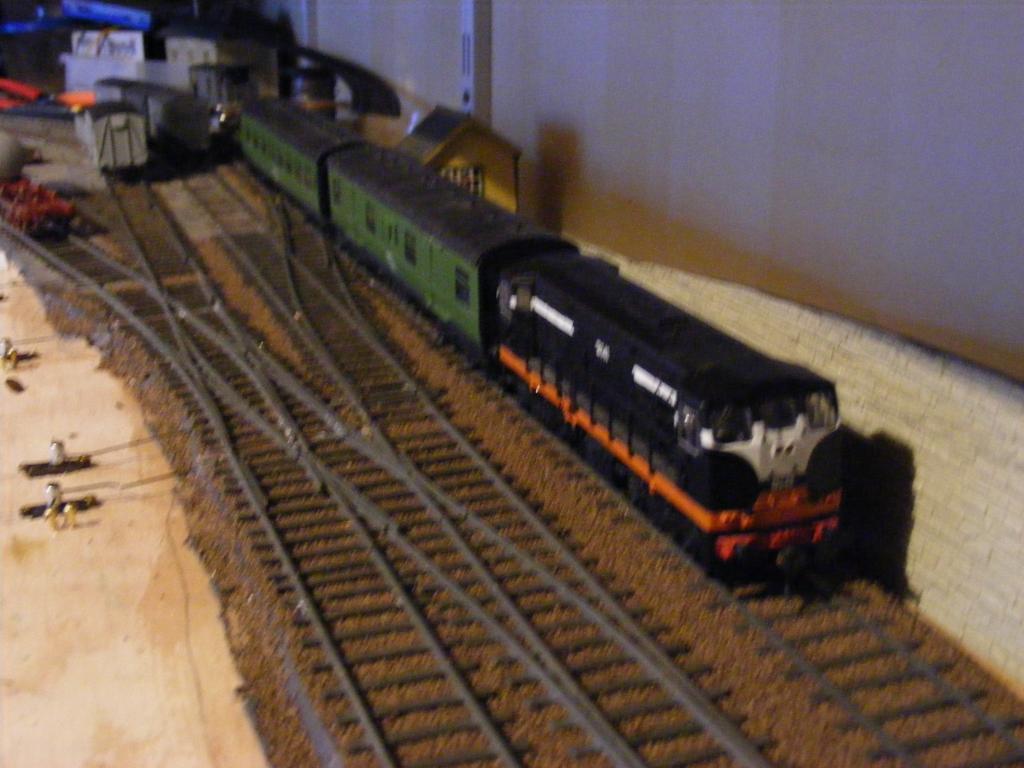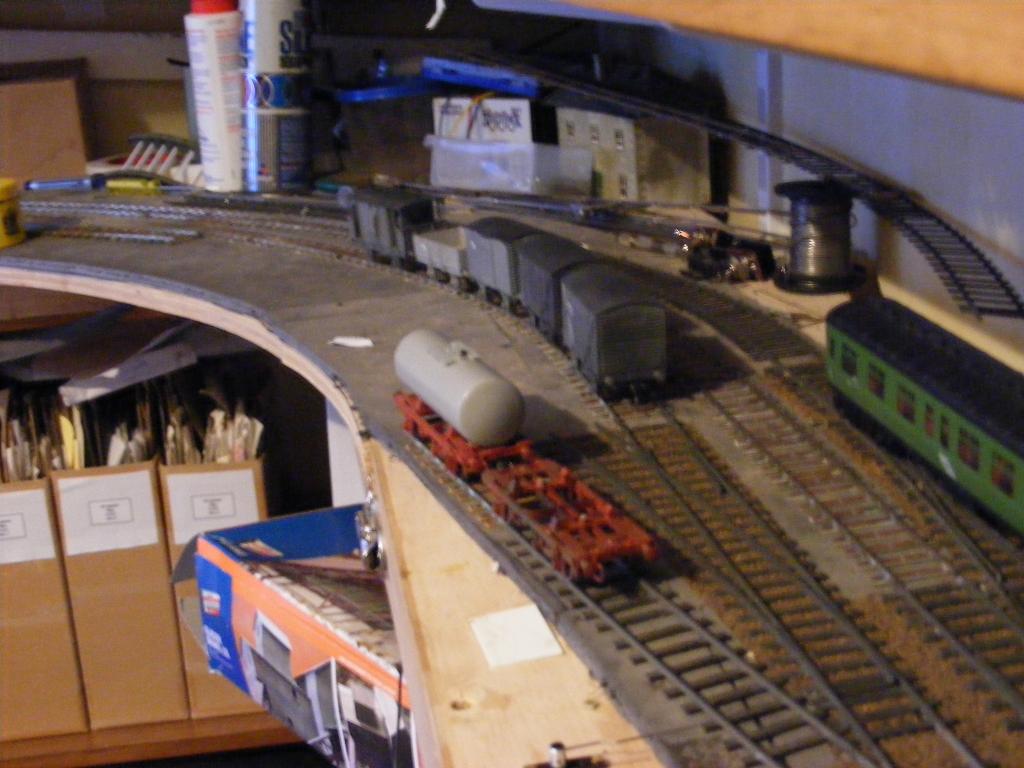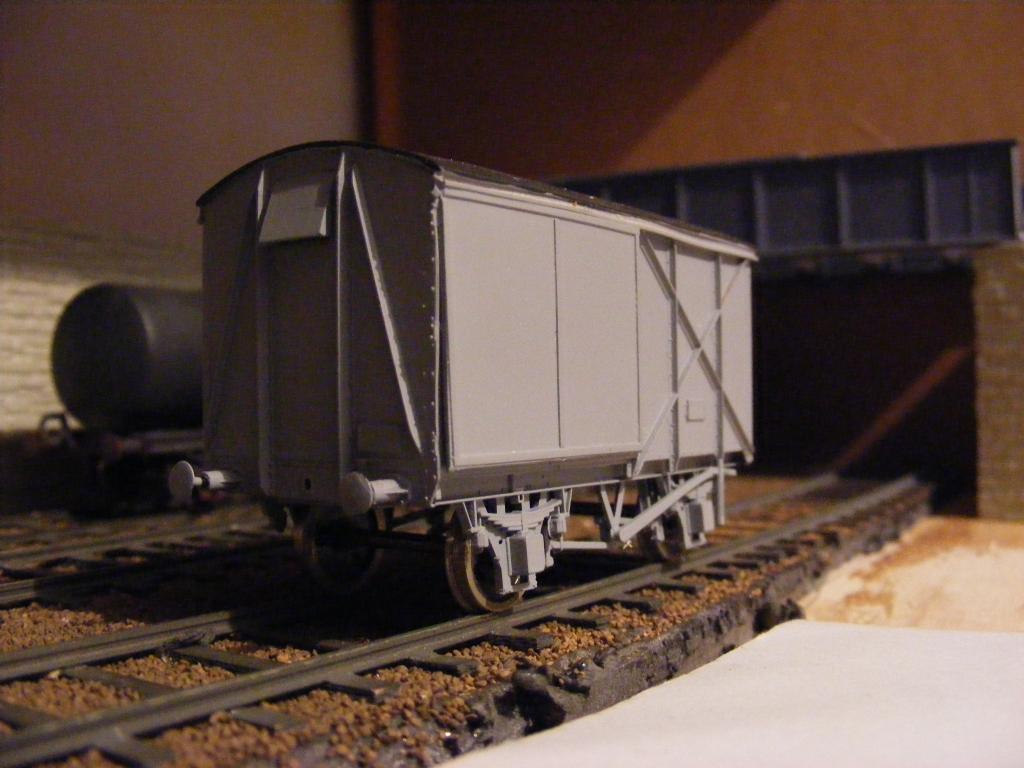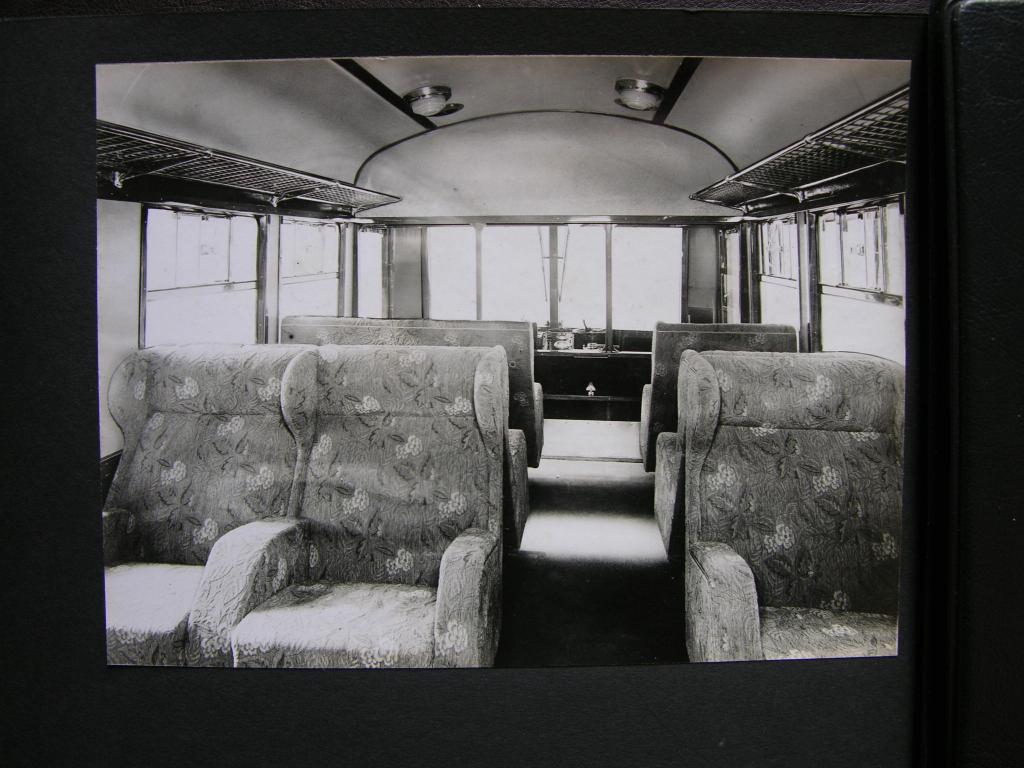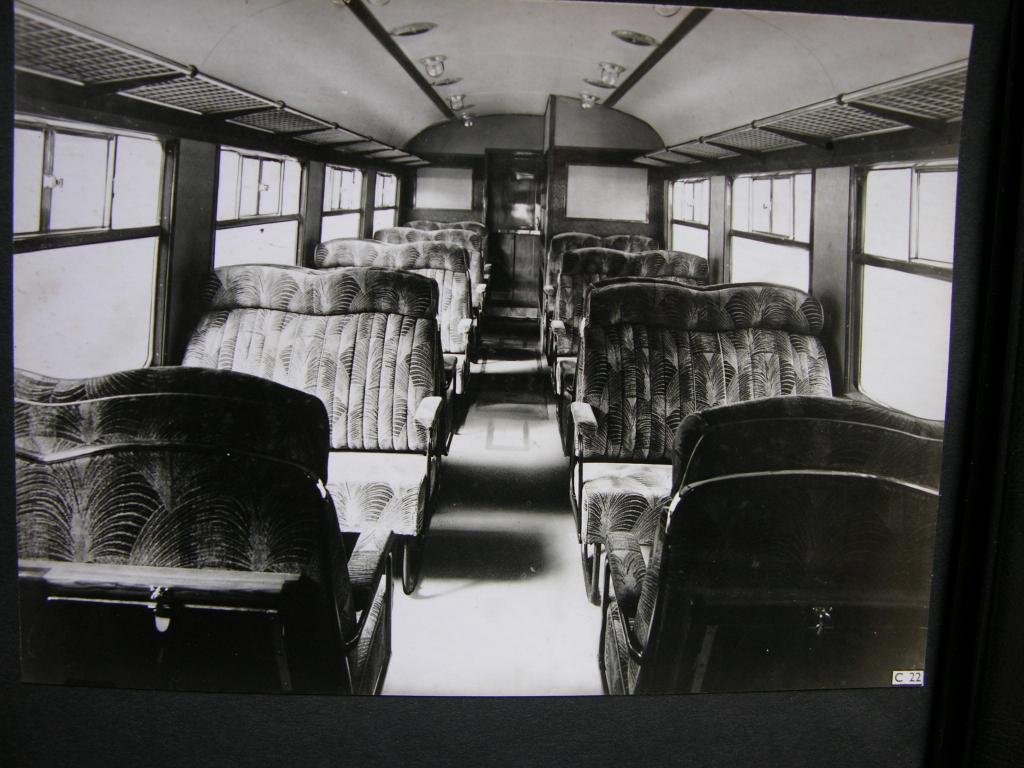-
Posts
4,883 -
Joined
-
Last visited
-
Days Won
119
Content Type
Profiles
Forums
Events
Gallery
Blogs
Community Map
Everything posted by Mayner
-
Not really a realistic comparison the Main Line North is an important freight route the earthquake and line closure had a $40m cost effect on Kiwirail, IE/CIE have been trying to persuade the Government to let it close the Nenagh line with out success for the last 40 years. Logistics companies that use rail for long distance line haul work between the North Island and Christchurch such as Mainfreight & Toll NZ are likely to have applied pressure on the government to re-build the line.
-
Through Wellington (Picton)-Christchurch freight services to resume on 15th September 10 months after the Nov 2016 earthquake. http://www.kiwirail.co.nz/news/497/78/First-post-quake-freight-services-announced/d,news.html
-
My failure to get to grips with building a 21mm gauge layout in 20 years is more to do with external factors and personality than the challenges of scratch and kit building in 21mm gauge. Although my primary modelling interest is the Irish broad gauge I have tended to focus more on building locos and stock in 4mm to 5'3" and the 3' gauge than building a layout as until recently I did not have a suitable space. I have a shortish span of attention and tend to have flirtations in various scales and gauges and over the past 30 years built American N & G Scale, an Irish 3' shelf layout and an EM gauge industrial layout. Apart from the N Gauge all layouts have had spurts of interest followed by long periods of inactivity. Re-gauging a Murphy Models B141 and some Irish Railway Models ballast wagons or Cement Bubbles to 21mm gauge either to EM or S4 standards using Ultrascale or Gibson wheel sets would probably be the simplest way of getting something running before making a final decision between handlaying track in 21mmm gauge or continuing in OO, while gaining experience in kit and scratch building rolling stock.
-
In practice using EM gauge wheel sets in 21mm gauge does not have a significant distorting effect on the width of 21mm gauge locos and rolling stock. The overall wheels set width is 0.06 mm wider or ¾" in full size terms using EM rather than S4 wheel sets. The wider 2.28-2.3mm tyre width is largely offset by the narrower back to back gauge of 19.5mm used with modern plastic centered Gibson and Ultrascale wheels, some modelers use "standard" Jackson, Hornby, Bachmann wheels with a back to back of 19.3mm. The looser running tolerance using EM/OO standards is more forgiving in terms of workmanship building trackwork and rolling stock and to run locos and stock round smaller radius curves than feasible in S4 Its important to consider that its not always practicable to scale down running clearances between driving wheels and splashers and between rods in valve gear and that it may be necessary to increase clearances even in S4 standards. SSM locos have been built to 21mm gauge to EM standards by a number of modellers including several J15, S Class 4-4-0s and a number of SG 0-6-0s without significant modification, though it is important to check that there is sufficient clearance behind valance and splashers regardless of whether a loco is being built to 21mm or S4 standards
-
I have been messing around in 21mm gauge for over 20 years to EM standards though I have yet to build a successful layout mainly due to the lack of suitable space to build a layout. I started building an 8'X6' shunting layout a few years ago but gave up because because of side-swipe between coaches as I did not allow enough space between lines on curves, min radius curve was 3'. Track and back to back gauges were sourced from TMD models (the precursor of SSM) many years ago. At one stage SSM also produced 28mm W Irons for 21mm gauge stock and single lever IRCH brake gear used by the GNR and the Southern companies. 21mm loco & wagon/coach wheel sets were sourced from Ultrascale (Gear Services Letchworth) or by cutting and sleeving standard 26mm OO/EM gauge axles with 2mm bore brass tube, more recently I have used locally sourced 28mm Sn3.5 axles from Northyard Models. Ultrascale though expensive is probably the best option in terms of quality, though steam loco driving wheels are largely restricted to GWR types and there is a 3 month lead time between placing and filling an order. Alan Gibson produces a large range of wheels and components including brass wire, handrail knobs, bearings, though availability is somewhat patchy. High Level Models produce a range of gearbpxes which have become the de-facto standard for 4mm kit and scratch built locos. If you are going down the road of modelling the Omagh in the 1950s or 60s there is no real alternative to scratch or kit building every item of rolling stock. If you choose to use Murphy Models Irish coaches or other rtr OO gauge stock you will need to widen or replace the bogies/underframes as they are too narrow for 21mm gauge wheelsets. Murphy Models 141 with SSM Bredin Coaches Dapol & Parkside wagons with widened underframes I did not allow enough clearance between running lines and sidings which lead to side swiping between coaches on curved track CIE Palvan modified from Parkside BR van by moving out solebars and modifying doors
-
I would stick with OO or possibly N if you are planning to build a layout with a continuous run in a 10'X6' shed and you want to get something running quickly. I have been working in 21mm gauge for many years and simply haven;t had the time or space to build a layout. OO gauge rtr model steam locos are designed with considerable sideplay between wheels and chassis to reliably operate around curves of down to 15" radius. Handlaying track and building/converting rolling stock to 21mm gauge is straightforward enough provided you have a methodical approach and access to accurate track and back to back gauges. The minimum radius a loco or coach will traverse becomes a greater limiting factor the closer you get to the prototype in terms of wheel profile and gauge, which is one of the main reasons EM, P4 and 21mm layouts tend to be end to end or shunting planks rather than continuous run. 2' radius is the minimum recommended for a main line layout in OO- 3' about the minimum for a 4-4-0 tender loco in 21mm to OO/EM standards -3'6-4' in P4
-
Meanwhle in the UK the Department of Transport is planning to start trialing platoons of driverless trucks next year. https://www.engadget.com/2017/08/25/uk-platooning-trials/ Potentially major threat to workers whoes livliehoods are dependent on the trucking industry
-
Wagon load traffic was usually marshaled in station/yard order behind the locomotive. Its a lot easier and safer for a train crew to switch a single or a short cut of wagons than a whole train into a siding. This practice still continued to a lesser degree on railways that carry wagon load traffic, though traffic tends to be in cuts of wagons carrying a particular traffic than individual wagon loads The Sligo-Limerick goods would have run with wagons for stations on the Burma Road cut in behind the loco and traffic for destinations south of Claremorris including Bell containers for Waterford cut in behind the van. Depending on destination container wagons could also be cut in at the front or middle of a loose coupled goods. Before the Mayo Line went over to Liner operation wagons with ISO container traffic for Claremorris were likely to have been marshaled towards the middle of the train as the "Ballina Goods" departed the North Wall on its way westwards.
-
Welding the last rail joint to re-connect Christchurch & Picton 8 Aug 2017
-
I experimented with 3D printing for things like buffers, battery boxes and fuel tanks for the tin vans in Shapeways FUD. A high proportion of railway modelers produce the initial 3D model using the free basic version of sketchup or Autodesk 123D then upload the files to Shapeways who will produce a 3D render of your model and a quote for producing a model. Professional 3D modellers like B 1 Lancer & Neil Ward http://shpws.me/ONou have the advantage of high end professional design software like Solid Works Its definitely worth while having a play with Sketchup and uploading the results to Shapeways to get a feel for the 3D design and additive manufacturing process and the pros & cons of the whole process.
-

Photographic Website Updates
Mayner replied to thewanderer's topic in Photos & Videos of the Prototype
Quite a bit of change since visited Cobh by train in the mid 70s. The branch had quite an air of decay more in common with BR suburban and branch lines than CIE. The station building and Up Platform area was in use as a depot in connection with the Kinsale gas field, the up platform road and release road had been recently lifted and builders were building a concrete block wall between the depot and operating railway. The goods yard was still in use for block trains of scrap (mainly cars) in loose coupled corrugated opens, the carriage shed (Garda Station) was full of departmental coaches . A couple of years later the coaches had gone and the shed used to store empty open wagons. Off peak passenger services seemed to have been an hourly service with a B141 & 2-3 coaches with an extra train set during the morning an evening rush hour. Had a very exciting run over the line behind a 001 with 2 coaches in the mid 80s before the NIR railcars took over. Despite or maybe because of the 50mph line limit acceleration and the sound was phenomenal as the loco accelerated its featherweight train away from each intermediate stop. Maybe there is a case for Cork City Council to follow the example of Dunedin in New Zealand and establish a joint venture with IE & the RPSI to operate a shuttle service for cruise ship passengers between Cobh and Cork and excursions to Killarney. Dunedin bought a section of the closed Otago Central line from NZR in the late 1980s and set up a joint venture to operate the line as a commercial operation (not a heritage railway! )with a local enthusiasts group http://www.dunedinrailways.co.nz/our_company. Not as spectacular but an interesting parallel of what might have happened had Cork City or County Council had bought the Youghal Branch from CIE during the same era. -
I started studying the Triang-Hornby catalogue and picked out my 1st proper trainset a Triang-Hornby South African Goods in Terrys Toy Shop Henry Street when I was 12. During the summer holidays I explored the shops that stocked model railways eventually wearing a track through the city centre between Leeson Street and Monck place. Besides toy and hobby shops some bicycle/radio/tv shops stocked model railways including Mc Hugh Himself in Talbot Street, a radio/tv shop on Mary Street opposite the Jervis Centre, I came across a treasure trove of old Tri-ang track and accessories including Block Instruments in a shop at the corner of Grafton Street and St Stephens Green. My horizons widened as I got a bit older to include the Model Shop in Rathfarnham Shopping Centre and occasional visits to George Hannan's shop in Malahide. The shop in the Rathfarnham Shopping Centre was managed by John Byrne who commissioned the first Irish Lima rtr models. Declan Lonegan a talented modeler and former Secretary of the MRSI assisted in the Rathfarnham shop on Saturday afternoons, was very helpful and some times brought along models assembled from whitemetal kits including a GEM LNWR Jumbo 2-4-0 George Hannan was an accomplished Narrow Gauge modeler and artist, who's model of Killybegs was featured in the Railway Modeller during the early 60s also built a 009 rabbit layout with scratch built models of Welsh Narrow Gauge locos and stock. I went through much the same experience though I had deeper pockets when I moved to the UK in the mid-80 often spending my weekends for the first couple of years visiting model shops and exhibitions in London and the South East.
-
The trailer coach looks like a K15 3rd Class. SSM do a complete kit for these coaches, Worsley Works have the option of a set of scratch builders parts or sides only to fit a rtr body. Interesting the note about the coach being panneled in Tempered Masonite (compressed cardboard) on timber framing which contributed to the short life of post WW11 GNR coaches compared to similar NCC/UTA & CIE stock
-
Good news Kiwirail expects to re-open the line for through freight services "within weeks" approx 4 Months ahead of schedule with two overnight freights between Picton & Wellington 50% of the normal scheduled service. Its planned to run at night to avoid conflict with the earthquake recovery work, railway also expects to carry construction material for the re-build ttps://www.stuff.co.nz/timaru-herald/news/national/95374850/South-Island-rail-line-could-open-for-freight-within-the-month
-

remaining mechanical signal cabins in ireland
Mayner replied to Junctionmad's question in Questions & Answers
Some working signals may have been retained at Abbey Junction to protect the Wharf Level crossing. The line from Waterford to Snow Hill Tunnel was converted to track circuit block working in connection with the opening of the Belview terminal about 20 years ago, Abbey Junction cabin was retained to control the signals protecting the Wharf level crossing. I am not sure if automatic intermediate signals were provided to allow trains to follow each other through the section from Waterford to Belview -
I think Status Quo is building a GNR600 Class AEC railcar set. Both the railcars and later coaches were assembled using parts supplied by Park Royal. Photos seem to be official GNR or Park Royal not sure where I got them
-
The installation is pretty much the standard for large scale battery radio remote control there is no direct equivalent for the DCC mobile decoder and power chip. On the plus side running is very reliable as there is no problem with poor pick up and the locos have good momentum because of weight. The battery control adds another element of realism, to make sure that a loco has enough fuel (charge) to get back to the shed at the end of a days operation.
-
More large scale stuff but slowly clearing the backlog and may get around to some small scale Irish modelling. But 1st some un-scheduled maintenance when I took K27 464 out of service to fit a new sound system. The leading truck or pilot disintegrated possibly as a result of the loco riding over a nut or other obstruction on the track. Replacement trucks are no longer available so it was a case of fabricating a new truck using KS brass bar and slab. The rectangular side frames were cut roughly with a hacksaw taped together with double sided tape, then milled and bored to final shape with the trusty Unimat SL set up as a milling machine. The keyhole shaped piece was cut out using a fine toothed blade in a piercing saw. The truck bolted together with 10BA bolts then soldered with a cheap 60 watt soldering iron Carrs 179 degree solder and phosphoric flux I prepared and blackened the truck using Carrs Metal Surface Conditioner & Carrs Metal Black rinsing well between each application. I will spray the truck black once I have burnished the metal finish, and then seal the surface with Testors Clear Coat. This should hopefully reduce the risk of seeing bare metal in areas where paint is likely to chip off.
-

Winter on the Midland Line (New Zealand) July 2017
Mayner replied to Mayner's topic in Photos & Videos of the Prototype
Nothing compared with some people confusing Austria with Australia http://www.adelaidenow.com.au/news/national/australia-is-confused-with-austria-way-too-often-for-anyones-liking/news-story/b0fed3bbad0192e20a434d981437b2df The 17 AK panoramic coaches used on Kiwirail long distance passenger trains are based on Swiss Rhaetain Bahn stock, the observation cars and generator vans are based on converted goods brake van which gives the trains a disjointed look. Passenger stock is sometimes added to the consists of freights for non-revenue moves between depots and works or press and vips for the opening of new freight services and terminals -
Video of trains in the foothills of the Southern Alps in the Springfield area. Winter struck in earnest during the past two weeks with heavy snow fall blocking mountain passes in the Southern Alps and roads across the Desert Plateau in the North Island. I guess the photographer would have needed snow chains to go any further west.
-
The Railway Roundabout film would have been fairly typical of the West and areas with small family farms.https://www.youtube.com/watch?v=geuu47Rr35U Smaller cars and 22 axle trucks would have been pretty much the norm from the mid 1930s . Edward (donkey) was cheap to run for bringing milk to the creamry for small dairy farmers and bringing home turf from the bog, getting into places a tractor or horse could not go. Smaller cars such as the Ford Anglia, or VW Beetle often replaced the donkey for bringing milk to the dairy or transporting calves, sheep or pigs to the farm or mart. Oddly Ford or GM don't seem to have developed a Ute (Austraian/NZ farmers car/pick up truck) for the Irish Market The economy took off with the more open economic policies of the 1960, the more prosperous farmer would aspire more to a Mercedes than a Ford or Volkswagen.
-
Fayles Bulletin recorded 15 ex MGWR locos on shed in Athlone including 4 members of the Class 531,532,533 & 535 on a mid-week day excursion to Athlone in September 1937. 533 the last of the class to remain in service (1953) seems to have worked in the Galway area and the Loughrea Branch there is a LGRP photo of her on shed in Galway and a JP O'Dea photo of her opposite the signal cabin possibly in CIE days. The Achill Bogies were originally built as D Class 2-4-0s in 1880 and rebuilt into 4-4-0s after 20 years service. The 4-4-0s had smaller cylinders and were not as powerful than the K Class 2-4-0s (GSR G2) introduced in the 1890s. 531,534 & 535 were later rebuilt with superheated boilers and larger cylinders which theoretically would have brought the locos into line with the 2-4-0s in terms of tractive effort. The closing of branches and less frequent passenger services during and after the emergency would have pretty much made the Achill Bogies redundant. The G2s were preferred to the larger MGWR D6 & 7 4-4-0s for passenger services on the Mayo & Sligo roads having a reputation of being being steadier at speed and easier on the track than the larger locos
-
The film at Westport is likely to be in late GSR days, the loco is a 2-4-0 she still has laminated springs above the leading axle rather that the volute springs fitted to the class in CIE days, an Achill Bogie is hiding behind the station sign at Manulla Junction. I wonder was the train departing Claremorris the Limerick-Sligo train, the coach panelling looks GSWR in style and the WLWR line continued/s to be operated as a GSWR branch in Midland territory right up to the ending of passenger services with Limerick responsible for supplying locos and stock. In GSR & CIE days pre-amalgamation locos stuck pretty much to their territory with few exceptions. GSWR & Midland locos replacing withdrawn DSER locos on the South Eastern, a Midland Cattle Engine & Standard Goods on long term loan to Waterford. Occasional trails of ex Midland D6&7 4-4-0s on Kingsbridge-Nenagh-Limerick trains and GSWR D4s on the Sligo Road Midland locos sometimes worked ballast trains over the Burma Road from Lecarrow to stations on the Sligo Road as an alternative to Athlone-Mullingar I
-
Interesting to see the traffic is mostly in box cars rather than covered hoppers which is pretty much the staple in grain growing area of the mid-West. A lot of the duplicate traffic that was spun off by the Class 1 was bought by the State or City Government (to maintain rail connections to local industries) and the operation contracted out to a shortline operator. The Norfolk & Western absorbed the Nickel Plate and Wabash which served much the same area during the 1960s and used the best bits of the two systems to form a link from the East Coast to Chicago and St Louis.(The West). The whole dynamic in the North East change with the break up of Conrail between Norfolk Southern & CSX about 20 years ago resulting in both companies operating competing New York-Chicago routes a condition that hadn't existed since the mid 1960s.
-
You are not alone David!!! I am becoming more and more tempted to try 7mm 36.75mm gauge a bit easier to see than N or OO and easier on the pocket than 1:20.3. Dave Walkers, 36.75mm gauge Killanney a medium sized WLWR/MGWR junction terminus had a colour feature in the Oct 1985 Modeller. I saw the layout at the Chatham show about 25 years ago and may have slides or photos somewhere. The layout was inspired by and shared locos and rolling stock with Castle Rackrent, Daves own stock included some very fine looking WLWR locos with plenty of brasswork in lined crimson lake and a MGWR small tank in lined light green & a 101 Class in lined GSWR green. Killanney, Castle Rackrent and Paul Greenes S Scale layout are certainly an inspiration to model the pre-WW1 era when the railways were at their xenith, the WLWR may have been poor but the lined crimson lake livery exceptional and the locos and stock of plain outline and simple to model compared with the GSWR & Midland. Harry Mulhollands Knockmore Junction featured in April 2004 British Railway Modelling Irish supplement is likely to be O gauge, Harry's GNR locos regularly appeared at the Bangor exhibition. Going back to 21mm gauge Tim Cramer (Cork) once built a layout in 21mm gauge before moving up to O gauge, Tim regularly published articles on Irish Modelling and drawings or locos and stock in the Railway Modeller, Model Railway Constructor and Model Railway in the 1970s & 80s and he has also been the driving force behind many of The Tyrconnel/Alphagraphix 7mm gauge loco and rolling stock kits hence the heavy West Cork focus. Dublin modellers Brian Fennell and Jim Maguire built most of the locos and stock used on the MRSI Loughrea layout including several TMD/SSM kits and scratch built models. Brian acquired Tim Cramers Bandon Tank, another modeller Paddy Thormley a scratch built GNR JT built by a professional modeler Harry Connaghton.
.png.c363cdf5c3fb7955cd92a55eb6dbbae0.png)

